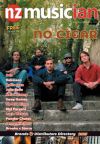Tutors’ Tutorials: Sub-Mixing – A Mix Within A Mix Within a Mix…
Tutors’ Tutorials: Sub-Mixing – A Mix Within A Mix Within a Mix…
While sub-mixing may at first glance seem like lacklustre housekeeping for your recording project, its actually about far more than simple organisation. Sub-mixing gives you greater control and with that control comes greater creative potential. I often see people create edit groups or mix groups, which most ProTools users are probably familiar with, but these just gang the faders or regions and may not be enough.
What is a sub-mix?
It’s a mix within a mix. Sub-mixes are often used to create various stages within a main mix. These sub-mixes often consist of instruments which share qualities, much like the sections of a band or orchestra, i.e. percussion, strings, brass etc. You may hear sub-mixing referred to as sub-grouping, dub-mixing or stem-mixing .
But why?
Consider that the ultimate goal for your multi-track recording is to sum everything down to just TWO channels − your main stereo mix. This is accomplished through the process of mixing down.
But let’s say you have a 16, 32, or even 64+ track recording, adding all those channels together in one go can be a nightmare! Sub-mixes allow us to take care of smaller sections of the mix before adding everything together at the end, making your project more manageable as you separate your mix into clear stages. Think of it as filing digital folders: it’s much easier to deal with them if you sort them into groups (directories) rather than heaping them all on your desktop.
How?
It’s actually really easy. Say we have an 8-track drum recording which we want to simplify in the context of a larger mix – all we need to do is take those eight channel outputs and route them to a new drum bus instead of your main mix bus. Next you create an auxiliary return channel with the drum bus as its input, and that’s it! This can be easily done in most DAWs, but make sure to determine whether you need your sub-mix to be stereo or mono and route accordingly.
Now you have one (stereo) channel to control all eight drum channels at once. You still have individual control over the individual parts, but now you can also treat them as one holistic instrument. You can take it even further if you have multiple kick or snare signals by first creating a bus for each of those and then mixing them into the drum bus. And the possibilities go on.
Optimising creative power
Say you have double-tracked the same guitar part multiple times across as many channels. Now you decide you want to EQ those signals…well, normally you would need to use one EQ per track, each doing the same thing since each of those guitar tones is probably identical. The problem is that working this way will needlessly hog processing power, but if you now sub-group all those guitars you can simply put one EQ on the new group channel to treat them all at once.
Doing this will make your mixing sessions lean and maximize your systems potential for creative DSP. I should also mention that the more you work this way, the more you will find creative reasons for doing so.
So, next time you are multi-tracking and it seems like things are getting out of hand, or perhaps you just want to slam a few signals with the same compressor, or maybe you just feel like trying something new, remember that your mix does not necessarily need to consist of just one mix.
Marcel Bellve is a studio supervisor and lecturer at SAE Institute in Auckland. He is also a musician and produces music for film and television. Get in touch with Marcel at m.bellve@sae.edu

